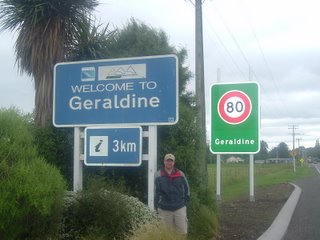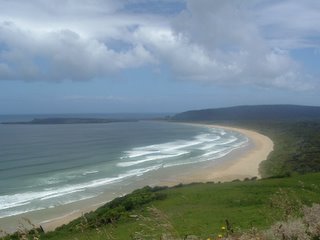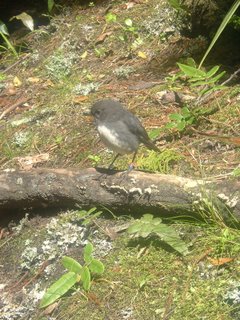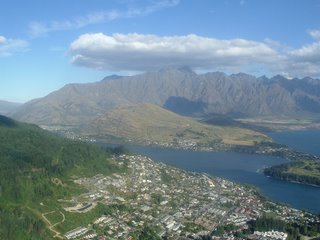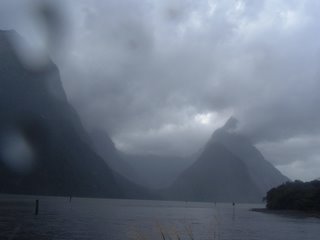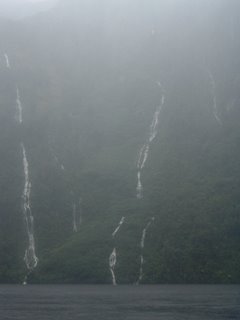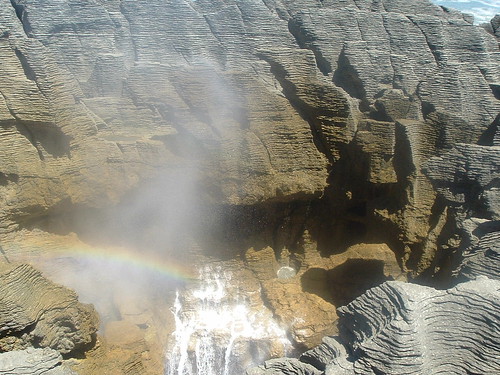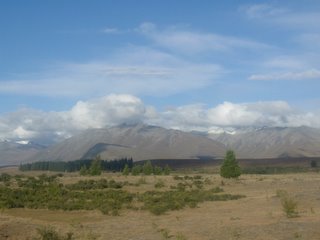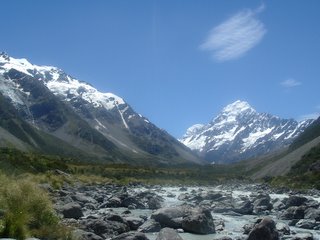Dunedin to Surat Bay
Boxing Day, another paid public holiday here, and the streets couldn't look more different. The sidewalks and shops are packed this morning, as apparently a city full of shoppers popped into existence when the sun came up this morning.
We're getting out of town, though, chancing our car's ability to get us through the southeastern part of NZ, known as the Catlins.
It's an area that's slightly off the main tourist path, but is packed with things to see. Mostly more of the same - beaches, forests, cliffs, waterfalls, birds and sealife - but more of the same in New Zealand is usually pretty good, and there's always endless variations on the theme.
The main difference in the Catlins is that all of the stops seem to be at the end of long gravel roads. This is the peak tourist season, and all of the parking lots are packed. At the more well-known sights, that means there are as many as half-a-dozen cars to contend with.
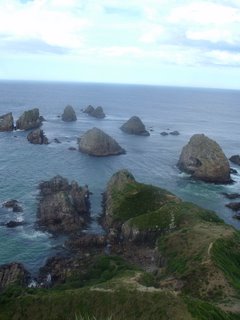 Our main stop is a spot known as Nugget Point, a ridge jutting out into the ocean, topped by a lighthouse. Just past the end of the ridge, where the land drops into the ocean, a series of rocks poke out of the water - the nuggets.
Our main stop is a spot known as Nugget Point, a ridge jutting out into the ocean, topped by a lighthouse. Just past the end of the ridge, where the land drops into the ocean, a series of rocks poke out of the water - the nuggets.
The view is worth it - it's hard to get tired of the abrupt transition from water to land you often get in New Zealand. Even when there is a gentle beach, the hills aren't far behind.
On the other side of the ridge, set back from the lighthouse, there is one of those beaches, tucked under a steep hill, providing just a sliver of transition from land to sea. Here there is a small hut, providing stealth for us and comfort for the penguins who land on the beach and have nests on the hill. Rather shy, the yellow-eyed penguins apparently won't land to feed the chicks if they see much movement on the bank. The hut, however, gives us a vantage point to watch the penguins as they come ashore to feed newly-hatched chicks.
Penguins are a breed I've never seen before outside of a small aquarium enclosure. As always, the birds' odd walk provides humor, especially as they clamber up the hillside. But it is a striking sight to watch the black-and-white birds, looking more animal than bird-like, and to human eyes somehow giving off an air of knowledge, walking out silhouetted again the sand before disappearing into the waves.
 The archived ramblings of my time as a world traveler up to my current life in Washington, D.C.
The archived ramblings of my time as a world traveler up to my current life in Washington, D.C.